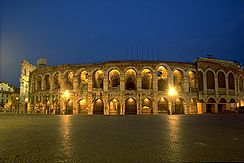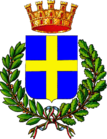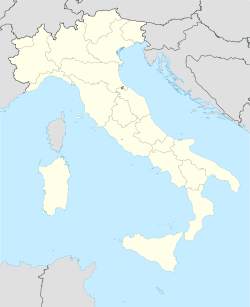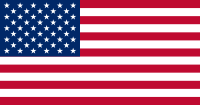Verona
| Comune di Verona | |
|---|---|
 |
|
 Municipal coat of arms |
|
 |
|
| Country | |
| Region | Veneto |
| Province | Verona (VR) |
| Mayor | Flavio Tosi |
| Elevation | 59 m (194 ft) |
| Area | 206.63 km² (79.8 sq mi) |
| Population (as of April 15, 2006) | |
| - Total | 259,968 |
| - Density | 1,258/km² (3,258/sq mi) |
| Time zone | CET, UTC+1 |
| Coordinates | |
| Gentilic | Veronesi or Scaligeri |
| Dialing code | 045 |
| Postal code | 37100 |
| Frazioni | Avesa, San Michele Extra, San Massimo all'Adige, Quinzano, Quinto di Valpantena, Poiano di Valpantena, Parona di Valpolicella, Montorio Veronese, Mizzole, Marchesino, Chievo, Cà di David e Moruri |
| Patron | Saint Zeno of Verona |
| - Day | April 12 |
| Website: www.comune.verona.it | |
| City of Verona* | |
|---|---|
| UNESCO World Heritage Site | |
|
|
|
| State Party | |
| Type | Cultural |
| Criteria | ii, iv |
| Reference | 797 |
| Region** | Europe and North America |
| Inscription history | |
| Inscription | 2000 (24th Session) |
| * Name as inscribed on World Heritage List. ** Region as classified by UNESCO. |
|
Verona is one of the seven provincial capitals in Veneto, Northern Italy and it has the second largest population in Triveneto (an area formed by the three regions of Veneto, Trentino – Alto Adige and Friuli – Venezia Giulia).
Verona is visited every year by hundreds of thousands of tourists because of its artistic beauties, several annual fairs, shows and operas, such as the lyrical season in the Arena, the ancient amphitheatre built by the Romans.
Verona owes its historical and economical importance to its geographical location. The ancient town of Verona and the center of the modern era are in a loop of the Adige River near Lake Garda. Because of this position, the areas saw regular floodings until 1956, when the Mori-Torbole tunnel was constructed, providing 500 cubic meters of discharge from the Adige river to Lake Garda when there was danger of flooding. The tunnel reduced the risk of flooding from once every seventy years to once every two centuries. Geographic history of Verona is plains and small mountain areas.
The most well-known monuments in Verona are the Arena and Juliet’s balcony. Inhabitants of Verona are referred to as "Veronese" (Italian: Veronesi or informally Scaligeri).
Contents |
History
Verona, or Veronia, was a city of the Euganei, who were obliged to cede it to the Cenomani (550 BC). With the conquest of the Valley of the Po the Veronese territory became Roman (about 300 BC). Verona became a Roman colonia in 89 BC, and then a municipium in 49 BC; Verona had the franchise in 59.
The city derived importance from being at the intersection of many roads. Stilicho defeated Alaric and his Visigoths here in 403. But with the taking of Verona (489 AD) the Gothic domination of Italy began; Theodoric built his palace there, and in Germanic legend the name of Verona is linked with his. This city remained in the power of the Goths all through the Gothic War (535–552), with the exception of a single day in 541, when an Armenian officer effected an entrance. Dissensions which arose among the Byzantine generals in regard to booty enabled the Goths to regain possession. In 552 Valerian vainly endeavoured to gain an entrance, and only the complete overthrow of the Goths brought about its surrender.
In 569 it was taken by Alboin, King of the Lombards, in whose kingdom it was, in a sense, the second city in importance. There Alboin himself was killed by his own wife in 572. The dukes of Treviso often resided there. At Verona Adalgisus, son of Desiderius, in 774 made his last desperate resistance to Charlemagne, who had destroyed the Lombard kingdom. Verona was then the ordinary residence of the kings of Italy, the government of the city becoming hereditary in the family of Count Milo, progenitor of the counts of San Bonifacio. From 880 to 951 the two Berengarii resided there. Otto I ceded to Verona the marquisate dependent on the Duchy of Bavaria.
The splendour of the city in those days, dominated by its forty-eight towers, is described in a Latin ode of which we shall speak later on. The increasing wealth of the burgher families eclipsed the power of the counts, and in 1100 Verona organised itself as a commune. The San Bonifacio could at most hold the office of podestà of the city now and then. Verona, at first undecided, was forced by Vicenza to join the Lombard League. This, however, gave rise to the factions of Guelphs and Ghibellines in Verona. When Ezzelino IV was elected podestà, in 1226, he was able to convert the office into a permanent lordship, and in 1257 he caused the slaughter of 11,000 Paduans on the plain of Verona (Campi di Verona). Upon his death the Great Council elected as podestà Mastino della Scala, and he converted the "signoria" into a family possession, though leaving the burghers a share in the government. Failing to be re-elected podestà in 1262, he effected a coup d'état, and was acclaimed capitano del popolo, with the command of the communal troops. It was not without long internal discord that he succeeded in establishing this new office, to which was attached the function of confirming the podestà. In 1272 Mastino was killed by the faction of the nobles.
The reign of his son Alberto as capitano (1277-1302) was one incessant war against the counts of San Bonifacio, who were aided by the House of Este. Of his sons, Bartolomeo, Alboino and Cangrande I, only the last shared the government (1308); he was great as warrior, prince, and patron of the arts; he protected Dante, Petrarch, and Giotto. By war or treaty he brought under his control the cities of Padua (1328), Treviso (1308) and Vicenza.
Alberto was succeeded by Mastino II (1329-1351) and Alberto, sons of Alboino. Mastino continued his uncle's policy, conquering Brescia in 1332 and carrying his power beyond the Po. He purchased Parma (1335) and Lucca (1339). After the King of France, he was the richest prince of his time. But a powerful league was formed against him in 1337 - Florence, Venice, the Visconti, the Este, and the Gonzaga. After a three years war, the Scaliger dominions were reduced to Verona and Vicenza (Mastino's daughter Regina-Beatrice della Scala married to Barnabò Visconti). Mastino's son Cangrande II (1351–1359) was a cruel, dissolute, and suspicious tyrant; not trusting his own subjects, he surrounded himself with Brandenburg mercenaries. He was killed by his brother Cansignorio (1359-1375), who beautified the city with palaces, provided it with aqueducts and bridges, and founded the state treasury. He also killed his other brother, Paolo Alboino. Fratricide seems to have become a family custom, for Antonio (1375-87), Cansignorio's natural brother, slew his brother Bartolomeo, thereby arousing the indignation of the people, who deserted him when Gian Galeazzo Visconti of Milan made war on him. Having exhausted all his resources, he fled from Verona at midnight (19 October 1387), thus putting an end to the Scaliger domination, which, however, survived in its monuments.
The year 1387 is also the year of the famous Battle of Castagnaro, between Giovanni Ordelaffi, for Verona, and John Hawkwood, for Padua, who was the winner.
Antonio's son Canfrancesco in vain attempted to recover Verona (1390).
Guglielmo (1404), natural son of Cangrande II, was more fortunate; with the support of the people, he drove out the Milanese, but he died ten days after, and Verona then submitted to Venice (1405). The last representatives of the Scaligeri lived at the imperial court and repeatedly attempted to recover Verona by the aid of popular risings.
From 1509 to 1517 the city was in the power of the Emperor Maximilian I.
Verona was occupied by Napoleon in 1797, but on Easter Monday the populace rose and drove out the French. It was then that Napoleon made an end of the Venetian Republic. Verona became Austrian territory when Napoleon signed the Treaty of Campo Formio in October, 1797. The Austrians took control of the city on January 18, 1798. It was taken from Austria by the Treaty of Pressburg in 1805 and became part of Napoleon's Kingdom of Italy, but was returned to Austria following Napoleon's defeat in 1814, when it became part of the Austrian-held Kingdom of Lombardy-Venetia. In 1866, following the Six Weeks War, Verona, along with the rest of Venetia, became part of Italy.
In 1866, on the anniversary of the defeat of Königrätz, the Austrians evacuated Verona, their strongest fortress in Venetia, which thus became Italian.
The advent of fascism added another dark chapter to the annals of Verona. As throughout Italy, the Jewish population was hit by a wave of anti-semitic propaganda planned since the early thirties and ending with anti-semitic laws (1938) that shut down many businesses and deported many local citizens to Nazi and Italian concentration camps. An Austrian Fort (now a church, the Santuario della Madonna di Lourdes), was used to incarcerate and torture allied troops, Jews and anti-fascist suspects especially after 1943, when Verona became part of the Repubblica di Salò or "Social Republic".
As in Austrian times, Verona became of great strategic importance to the regime. Galeazzo Ciano, Mussolini's son in law was accused of plotting against the republic during a mock trial staged by the Nazi and fascist hierarchy in Castelvecchio. Ciano was executed on the banks of the Adige with many other officers on what is today Via Columbo. This marked another turning point in the escalation of violence that would only end with the final liberation by allied troops and partisans in 1945.
Demographics


In 2007, there were 264,191 people residing in Verona, located in the province of Verona, Veneto, of whom 47.6% were male and 52.4% were female. Minors (children ages 18 and younger) totalled 16.05 percent of the population compared to pensioners who number 22.36 percent. This compares with the Italian average of 18.06 percent (minors) and 19.94 percent (pensioners). The average age of Verona residents is 43 compared to the Italian average of 42. In the five years between 2002 and 2007, the population of Verona grew by 3.05 percent, while Italy as a whole grew by 3.85 percent.[1] The current birth rate of Verona is 9.24 births per 1,000 inhabitants compared to the Italian average of 9.45 births.
As of 2006, 90.11% of the population was Italian. The largest immigrant group comes from other European nations (the largest coming from Romania): 3.60%, South Asia: 2.03%, and sub-saharan Africa 1.50%. Currently 1 in 5 babies born in Verona has a foreign parent. The city is predominantly Roman Catholic, but due to immigration now has some Orthodox Christian, Muslim and Hindu followers.
Main sights
Because of the value and importance of its many historical buildings, Verona has been named a UNESCO World Heritage Site. For a list of landmarks in Verona, see Buildings and structures in Verona. Verona preserved with pride many ancient Roman monuments, no longer in use, in the early Middle Ages, but much of this and much of its early medieval edifices were destroyed or heavily damaged by the earthquake of 3 January 1117, which led to a massive Romanesque rebuilding. The Carolingian period Versus de Verona contains an important description of Verona in the early medieval era.
Roman edifices
The Roman military settlement in what is now the center of the city was to expand through the cardi and decumani that intersect at right angles. This structure has been kept to the present day and is clearly visible from the air. Further development has not reshaped the original map. Though the Roman city with its basalt-paved roads is mostly hidden from view it stands virtually intact about 6 m below the surface. Most palazzi and houses have cellars built on Roman artifacts that are unfortunately rarely accessible to visitors. Piazza delle Erbe, near the Roman forum was rebuilt by Cangrande I and Cansignorio della Scala I, lords of Verona, using material (such as marble blocks and statues) from roman spas and villas.
Verona is famous for its Roman amphitheatre, the Arena, completed around 30 AD, which is the third largest in Italy, after Rome's Colosseum and the arena at Capua. It measures 139 meters long and 110 meters wide, and could seat some 25,000 spectators in its 44 tiers of marble seats. The ludi (shows and gladiator games) performed within its walls were so famous that they attracted spectators from far beyond the city. The current two-story façade is actually the internal support for the tiers; only a fragment of the original outer perimeter wall in white and pink limestone from Valpolicella, with three stories remains.The interior is very impressive and is virtually intact, and has remained in use even today for public events, fairs, theatre and open-aired opera during warm summer nights.
There is also a variety of other Roman monuments to be found in the town, such as the Roman theatre. This theatre was built in the 1st century BC, but through the ages had fallen in disuse and had been built upon to provide housing. In the 18th century Andrea Monga, a wealthy Veronese, bought all the houses that in time had been built over the theatre, demolished them, and saved the monument. Not far from it is the Ponte di Pietra ("Stone Wall Bridge"), another Roman landmark that has survived to this day.
The Arco dei Gavi (Gavi Arch), dedicated to the important Roman family of the Gavii, was built in the 1st century AD, and is famous for having the name of the builder (architect Lucius Vitruvius Cordone) engraved on it, a really rare case in the architecture of the epoque. It originally it straddled the main Roman road into the city, now the Corso Cavour. It had been demolished by the French troops in 1805 and was rebuilt in 1932.
Nearby is the Porta Borsari, an archway at the end of Corso Porta Borsari. This is the façade of a 3rd century gate in the original Roman city walls. The inscription is dated 245 AD and gives the city name as Colonia Verona Augusta. Corso Porta Borsari, the road passing through the gate is the original Via Sacra of the Roman city. Today, it is lined with several Renaissance palazzi and the ancient Church of SS. Apostoli (left), a few yards from Piazza delle Erbe.
Porta Leoni is the 1st century BC ruin of what was once part of the Roman city gate. A substantial portion is still standing as part of the wall of a medieval building. The street itself is an open archaeological site, and the remains of the original Roman street and gateway foundations can be seen a few feet below the present street level. As can be seen from there, the gate contains a small court guarded by towers. Here, carriages and travelers were inspected before entering or leaving the city.
Medieval architecture
The Basilica of San Zeno Maggiore [2] is considered one of the great achievements of Romanesque architecture. The present structure is the 3rd on this site, built from 1123-1135, over the 4th century shrine to Verona's patron saint, St. Zeno (died 380). The splendid façade dominates the large square, and is flanked with a beautiful 72 meter tall bell tower, which is mentioned by Dante in Canto 18 of Purgatory in the Divine Comedy. The weathered Veronese stone gives a warm golden glow and the restrained lines of the pillars, columns, cornices and the gallery with its double windows give the façade an air of harmonious elegance. The huge rose window is decorated as a Wheel of Fortune. The lintels above the portal have carvings of the months of the year. Each side of the doorway is embellished with 18 bas-relief panels of biblical scenes, and the inner bronze door has panels have 48 primitive but forceful Biblical scenes and depictions from the life of St Zeno. The meaning of some of the scenes is now unknown, but the extraordinarily vivid, barbaric energy of the figures is a superb blend of traditional and Ottonian influences. The interior of the church is divided into a Lower Church, occupying about 2/3 of the structure, and the Upper Church, occupying the remainder. The walls are covered with 12th and 14th century frescos and the ceiling of the nave is a magnificent example of a ship's keel ceiling. The vaulted crypt contains the tomb of St. Zeno, the first Bishop of Verona, as well as the tombs of several other saints. North of the church is a pleasant cloister. The church also houses the tomb of King Pippin of Italy (777-810).

San Lorenzo, Main chapel
|

San Lorenzo, Right aisle
|
The small Romanesque Basilica of San Lorenzo is one of the finest and most important in the city. Its dates from around 1177, but is built on the site of a Paleochristian church, some fragments of which remain. The church is built of alternating tracks of brick and stone, and has two cylindrical towers, housing spiral staircases to the women's galleries. Inside, the atmosphere is rather severe, but is still quiet and peaceful. The striped bands of stone and brick and the graceful arches complement the setting.

With an impressive span length of 48.70 m, the 1356 completed segmental arch bridge Ponte Scaligero featured at the time the world's largest bridge arch.
Santa Maria Antica is a huge Romanesque church was the parish church of the Scaligeri clan, and is famous for the Gothic Scaliger Tombs. Founded in the 7th century, the interior is very beautiful. The structure is of alternating bands of brick and stone. The square belfry has Gothic mullioned windows, and inset glass crosses in the roof admit light. Only large enough to hold a couple dozen people at most for mass, when the Scaligeri chose this to be their funerary chapel, the only place for their massive tombs was outside. Hovering in mid-air above the entrance to the church is the Tomb of Cangrande I. The base of the fancy sarcophagus forms the porch. Above is a Gothic canopy with a pyramid-shaped roof. The statue of the dead warlord is on top; however, the whole assembly is topped with a statue of Cangrande on horseback, in armor, sword in hand, with a manic smile and his outrageous dog-head helmet. Towering over the fence are the spire topped tombs of Mastino II and Cansignorio, with splendidly wrought Gothic pinnacles bristling like lances, and similar detailed carvings, statues, winged helmets and wrought-iron fences with the Scaligeri ladder emblems. In all of Europe, there is nothing like these spiky, flamboyant, monuments. Simpler tombs near the church wall contain other members of the Scaligeri clan, including Mastino I, Bartolomeo (d. 1304) and Giovanni (d. 1359).


The Duomo is also a notable Romanesque church.
Sant'Anastasia is a huge and lofty church built from 1290-1481 by the Dominicans to hold the massive congregations attracted by their rousing fundamentalist sermons. The Gothic portal has faded 15th century frescoes and carved scenes from the life of St Peter Martyr, but the façade is unfinished. Inside is one of the most outstanding examples of Gothic architecture in northern Italy. However, its proportions and various elements of the design are still decidedly Romanesque. Of note are the two holy water stoups inside are upheld by comical and realistic beggars. The Pellegrini chapel houses the famous fresco St. George and the Princess of Trebizond by Pisanello as well as the grave of Wilhelm von Bibra.
Notable people born in Verona
- Aleardo Aleardi, a poet
- Paolo Bellasio, composer of the Renaissance; member of the Roman School
- Damiano Cunego, former world number 1 cyclist and former Giro d'Italia winner
- Girolamo Fracastoro, also known as Fracastorius, renowned scholar, physician and poet
- Giovanni Francesco Caroto, painter
- Catullus, Latin poet
- Franco Donatoni, composer
- Giovanni Giocondo, architect and scholar
- Romano Guardini, theologian
- Marc' Antonio Ingegneri, composer, teacher of Claudio Monteverdi
- Cesare Lombroso, criminologist
- Scipione Maffei, writer and historian
- Marcantonio Negri, Baroque composer, associate of Monteverdi
- St. Peter Martyr, Dominican preacher and Saint.
- Ippolito Pindemonte, poet
- Ratherius, Medieval bishop and writer
- Vincenzo Ruffo, composer of the Renaissance
- Emilio Salgari, novelist
- Antonio Salieri, composer
- Michele Sammicheli, architect
- Bartolomeo Tromboncino, composer of the Renaissance
- Paolo Caliari, well known as "Veronese", painter
- Mario Capecchi Nobel prize in Medicine, 2007
- Gigliola Cinquetti, Singer who brought Italy its first Eurovision Song Contest in 1964
- Walter Chiari, Actor
- Sara Simeoni, former world high jump primatist and Olympic gold medalist
Verona was the birthplace of Catullus, and the town that Julius Caesar selected for his relaxing stays. In its history many important names passed and events happened that were relevant for the European history, like Theodoric the Great, king of Ostrogoths, Alboin and Rosamunda, the Lombard Dukes, Charlemagne and Pippin of Italy, Berengar I, Dante. Conclaves were held here, as were important congresses. Verona was in the travel diaries of Goethe, Stendhal and Paul Valéry.
Verona is the setting of the story of Romeo and Juliet, made famous by William Shakespeare. Although the earliest version of the story is set in Siena, not Verona — the move was made in Luigi da Porto's Istoria novellamente ritrovata di due Nobili Amanti — a balcony falsely claiming historical connection to the fictional lovers has become a tourist attraction for lovers; the short passageway leading to the balcony is covered with slips of paper carrying their graffiti, and a bronze statue of Juliet stands under the balcony, one breast polished by those touching it for luck.
Two households, both alike in dignity
(In fair Verona, where we lay our scene)—William Shakespeare, Romeo and Juliet, The Prologue
There is no world without Verona walls,
But purgatory, torture, hell itself.
Hence-banished is banish'd from the world,
And world's exile is death.—William Shakespeare, Romeo and Juliet, Act III, Scene III
Verona's Natural history museum contains one of the most valuable collections of fossils and archaeological remains of Europe. Castelvecchio Museum features a collection of sculptures, statues and paintings in a magnificent castle built in 1354-1356 and restored by renowned architect Carlo Scarpa from 1969-70, and 1975.
The town has two football teams. Historically, the city's major team has been Hellas Verona, but they are now in the third division of Italian football, Serie C1. The other team, Chievo Verona, returned to Serie A for the 2008-09 season after one season in Serie B.
Hellas Verona won Italian Championship in 1984/1985 joining the UEFA Champions League the following year.
Things and people belonging to Verona are called Veronese (plural: Veronesi). Renaissance painter Paolo Veronese is often referred to as simply "Veronese".

Twin towns
Verona has several partnerships. Some are thematic:
 Mashhad, Iran
Mashhad, Iran Pula, Croatia, have similar Roman amphitheatre
Pula, Croatia, have similar Roman amphitheatre Nîmes, France, have in common a Roman amphitheatre
Nîmes, France, have in common a Roman amphitheatre Munich, Germany, shares with Verona the title of "twin portal to their country"
Munich, Germany, shares with Verona the title of "twin portal to their country" Salzburg, Austria, shares a common heritage of musical tradition
Salzburg, Austria, shares a common heritage of musical tradition Bethlehem, Palestine
Bethlehem, Palestine Raanana, Israel
Raanana, Israel Košice, Slovakia
Košice, Slovakia Nagahama, Japan
Nagahama, Japan Fresno, USA
Fresno, USA Albany, USA
Albany, USA Detmold, Germany
Detmold, Germany
External links
- The official website of Verona municipality
- The official website of Arena
- Database of 4000 photos from Verona
- Photos from Verona
- A history of Verona, published 1910, by A. M. Allen. Edited by Edward Armstrong, with twenty illustrations and three maps, hosted by the University of North Texas Libraries Digital Collections
- UNESCO world heritage explication
References
|
|||||||||||||||
|
|||||||
